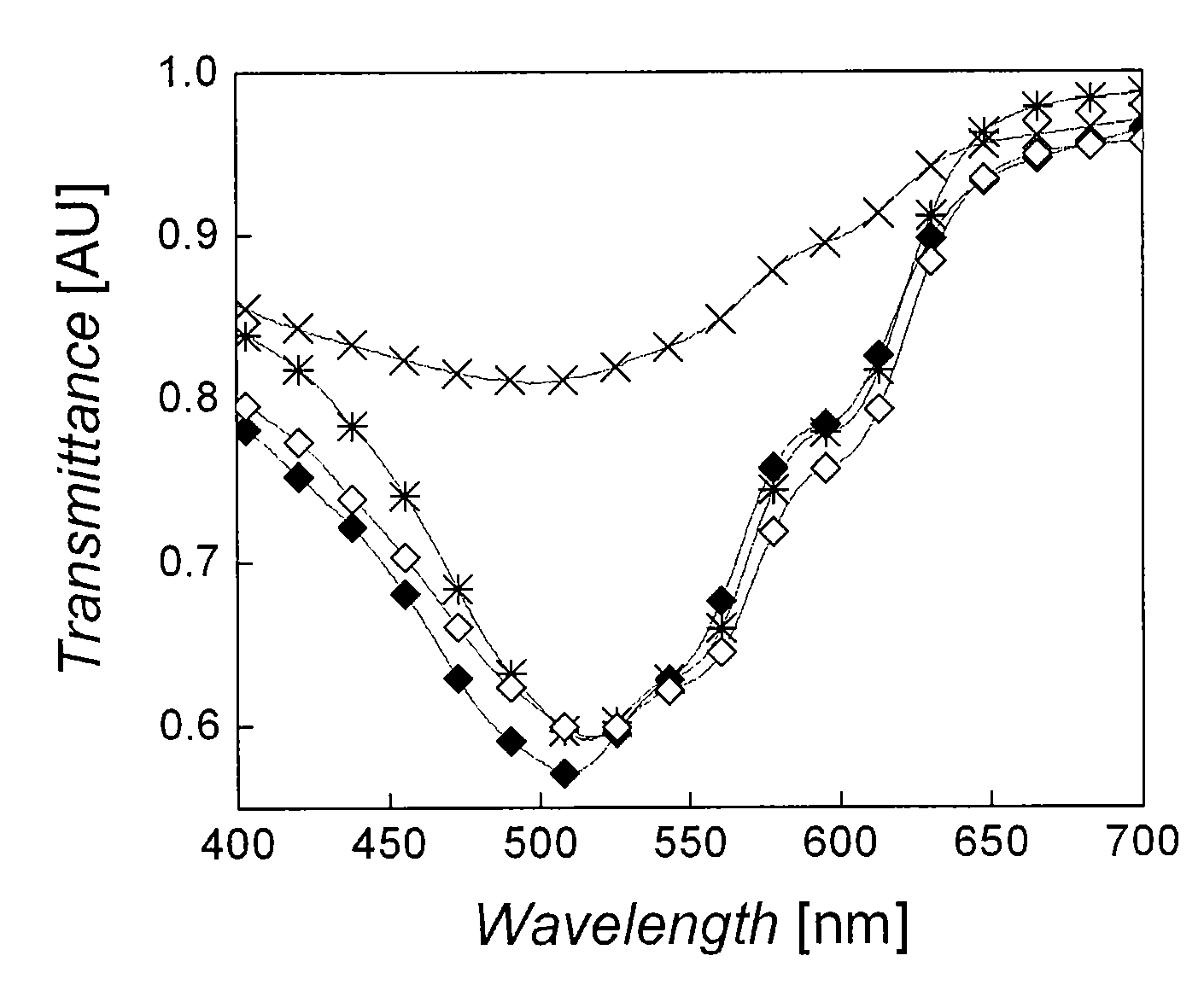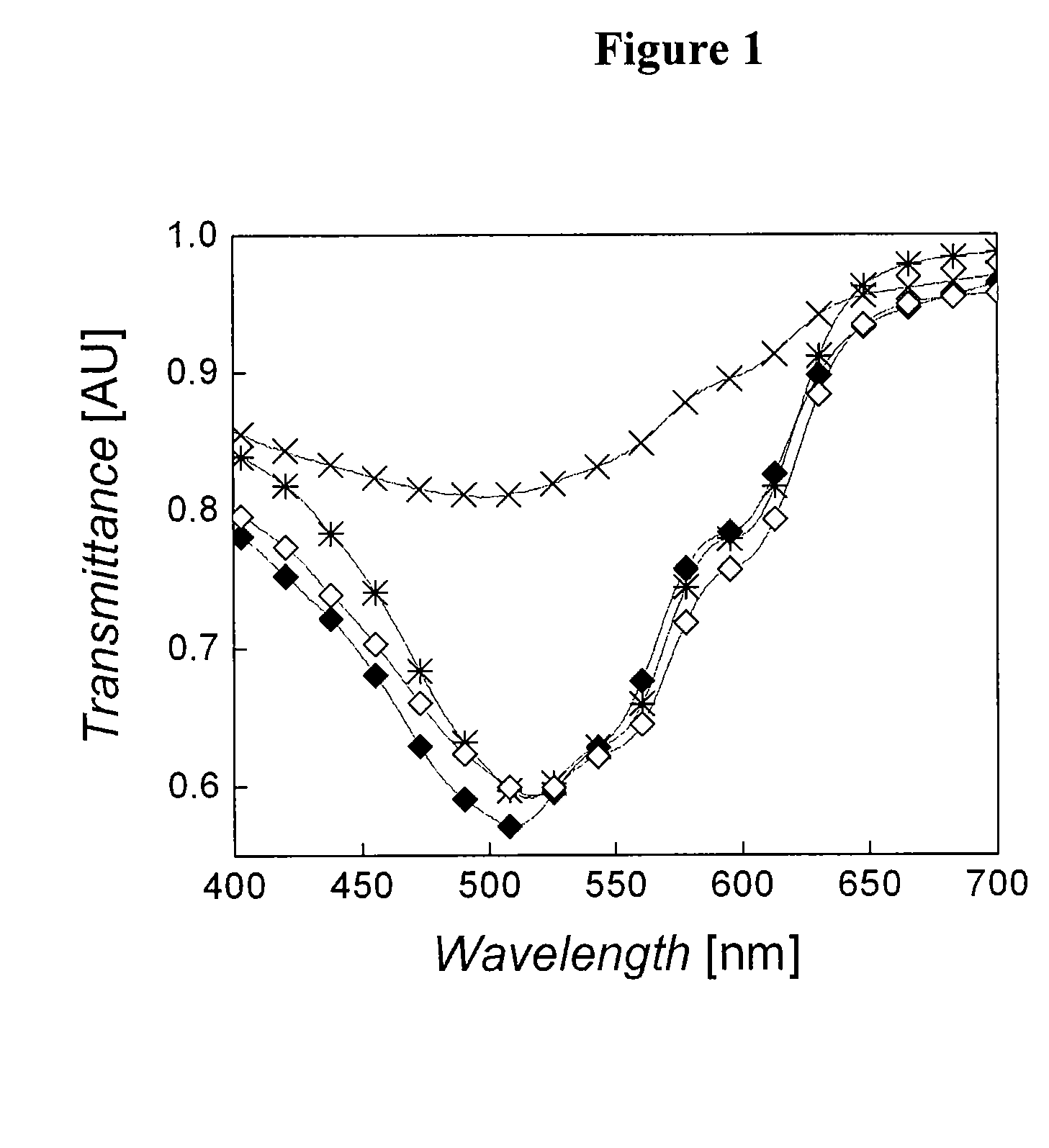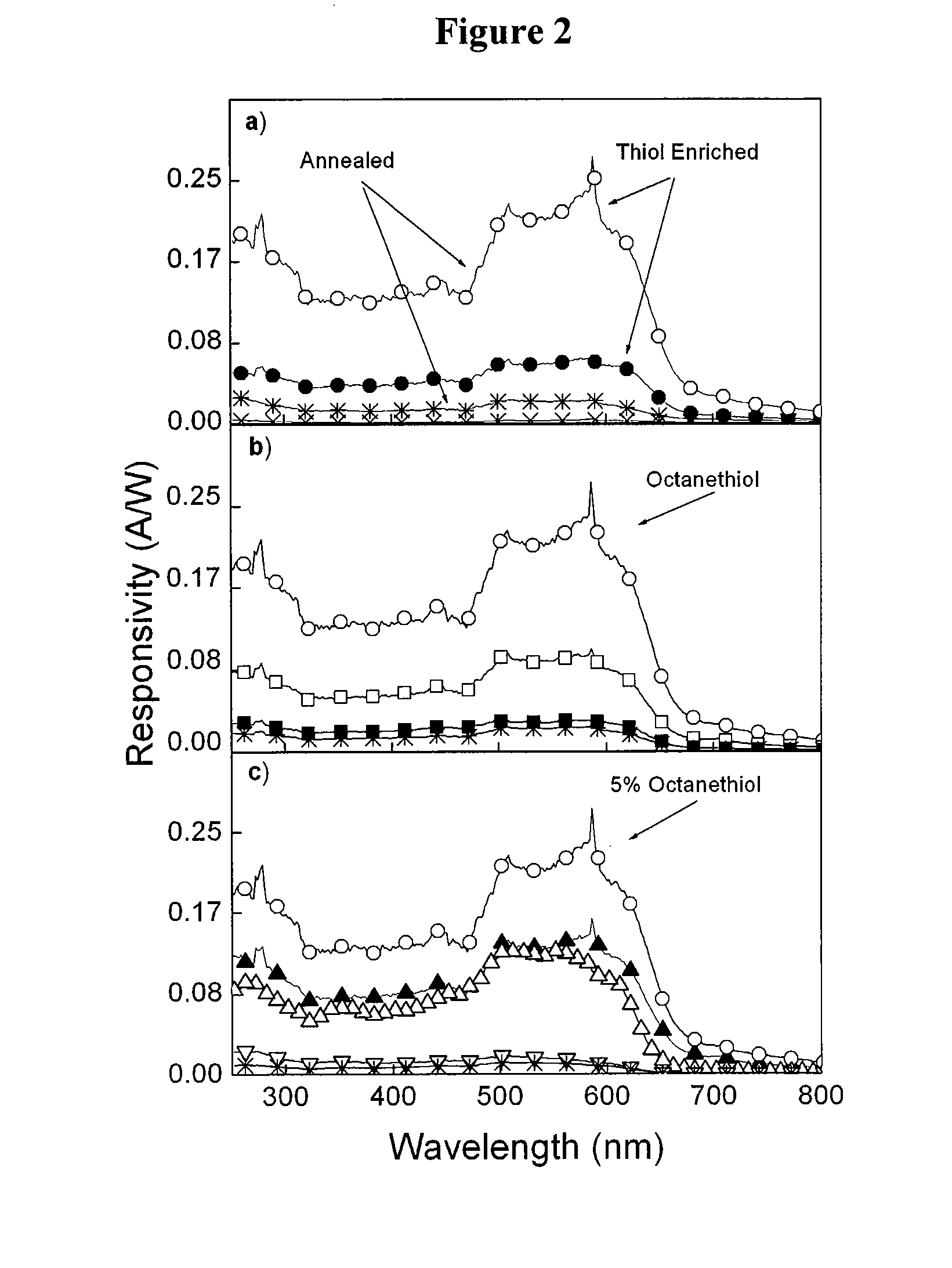Enhancing performance characteristics of organic semiconducting films by improved solution processing
a technology of organic semiconducting films and solution processing, which is applied in the field of polymer-based electronic devices, can solve the problems of high-purity silicon required for their manufacture and high cost, and achieve the effects of increasing the absorbance of annealed films, increasing power output, and increasing absorption
- Summary
- Abstract
- Description
- Claims
- Application Information
AI Technical Summary
Benefits of technology
Problems solved by technology
Method used
Image
Examples
example 1
Fabrication and Evaluation of Cells
[0101]PCBM was synthesized as described in the literature (J. C. Hummelen, B. W. Knight, F. LePeq, F. Wudl, J. Org. Chem. 1995, 60, 532), P3HT was purchased from Rieke metals, Baytron P was purchased from H. C. Starck, and all other chemicals were purchased from Sigma / Aldrich and were used as received. Glass slides coated with indium tin oxide were rinsed with soap and water and sonicated once in soapy water, three times in deionized water, and once in each of isopropyl alcohol and acetone for ten minutes prior to being dusted with a nitrogen gun and dried overnight. Prior to spin coating samples were cleaned under UV / Ozone for 30 minutes and dusted again with nitrogen. A layer of Baytron P Poly(ethylene dioxythiophene):Poly(styrene sulfonate) was spin coated at room temperature under atmosphere at 5000 RPM for one minute and then dried at 120° C. for 15 minutes. Devices were then transferred to a glove box which is maintained at less than 5 ppm of...
example 2
Thin Film Transistors
[0117]FIG. 4 shows the behavior of transistors fabricated from semiconductor films (BHJ-NA, dashed lines, and BHJ-5% C8-NA, solid lines). TFT devices were spun at 2000 rpm on heavily doped n-type Si coated with a 200 nm silica dielectric layer treated with octyltrichlorosilane. The source and drain electrodes comprised of 50 nm thick Au deposited on a 5 nm thick Ti adhesion layer in a bottom contact geometry; the TFT channel lengths were 5 or 10 μm and the channel width was 1 mm. Films fabricated with addition of 5% octanethiol show dramatic increases in current at each voltage tested.
example 3
X-Ray Diffraction Results
[0118]FIG. 5 and FIG. 30 show the results of X-ray diffraction studies on films processed with and without additive and with or without annealing. Films for X-ray diffraction were spun on glass substrates. Both annealing and use of additive induce significant changes in the X-ray diffraction pattern as compared to the non-annealed film cast without additive, indicative of underlying changes in film structure. FIG. 5 depicts X-ray diffraction results highlighting the diffraction peak for P3HT in P3HT / PCBM films cast from toluene BHJ-NA (x's, X), BHJ-A (asterisks or *, ), BHJ-0.75% C8-NA (filled diamonds, ♦), and BHJ-0.75% C8-A (open diamonds, FIG. 30 depicts X-ray diffraction results highlighting the diffraction peak for P3HT in P3HT / C-60 PCBM films cast from chlorobenzene (squares) or chlorobenzene containing 2.5% octanethiol (circles) either before annealing (closed shapes) or after annealing (open shapes). The films are cast using toluene (FIG. 5) and ch...
PUM
| Property | Measurement | Unit |
|---|---|---|
| external quantum efficiency | aaaaa | aaaaa |
| molecular weight | aaaaa | aaaaa |
| transparent | aaaaa | aaaaa |
Abstract
Description
Claims
Application Information
 Login to View More
Login to View More - R&D
- Intellectual Property
- Life Sciences
- Materials
- Tech Scout
- Unparalleled Data Quality
- Higher Quality Content
- 60% Fewer Hallucinations
Browse by: Latest US Patents, China's latest patents, Technical Efficacy Thesaurus, Application Domain, Technology Topic, Popular Technical Reports.
© 2025 PatSnap. All rights reserved.Legal|Privacy policy|Modern Slavery Act Transparency Statement|Sitemap|About US| Contact US: help@patsnap.com



